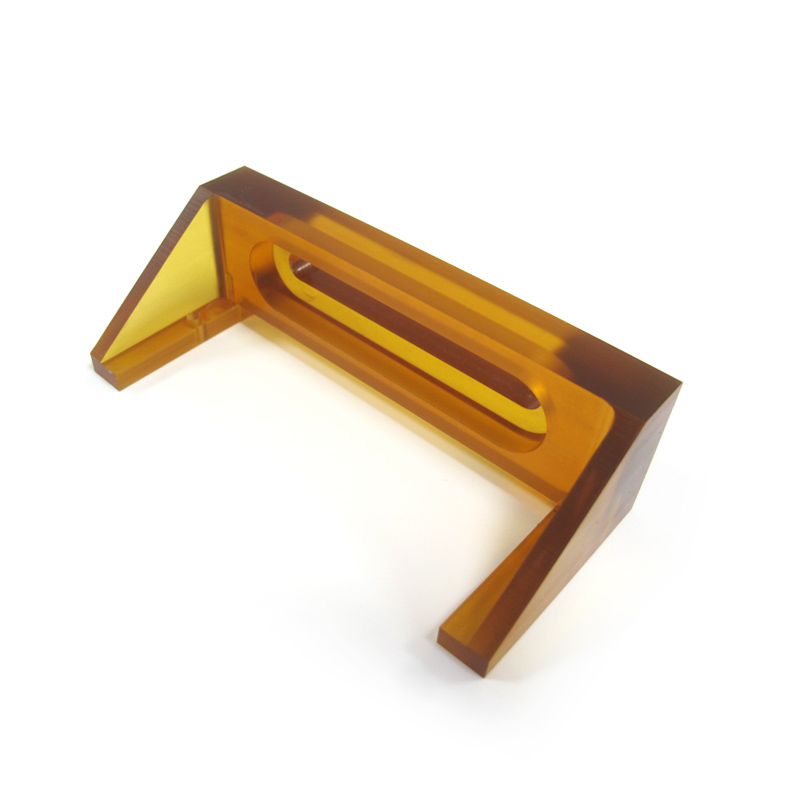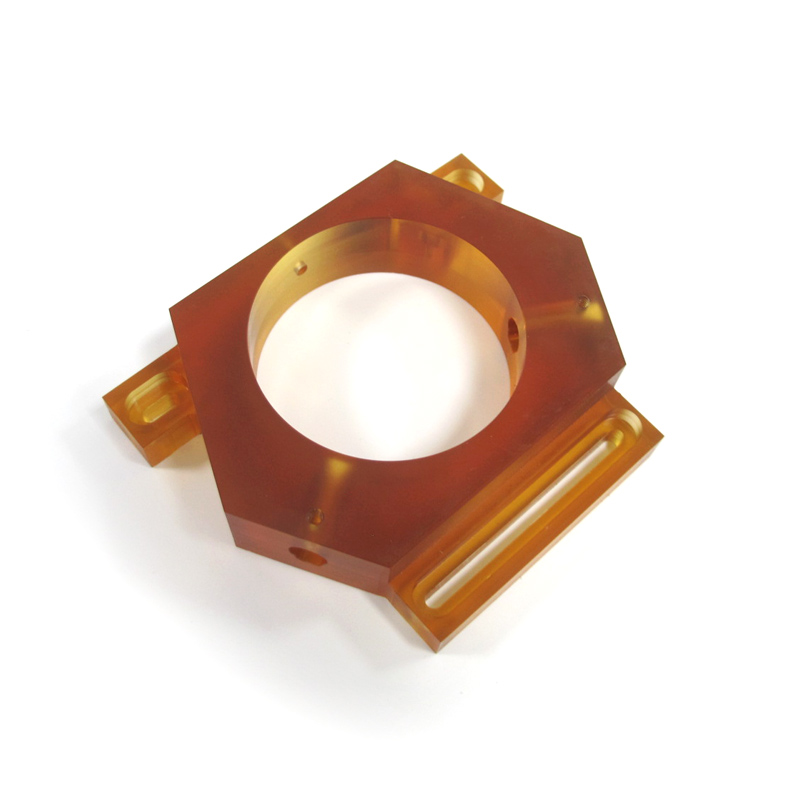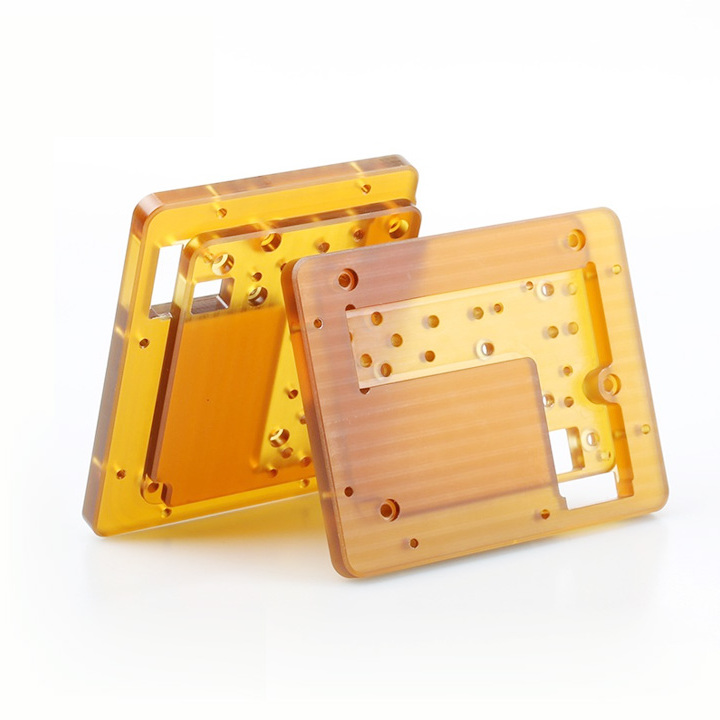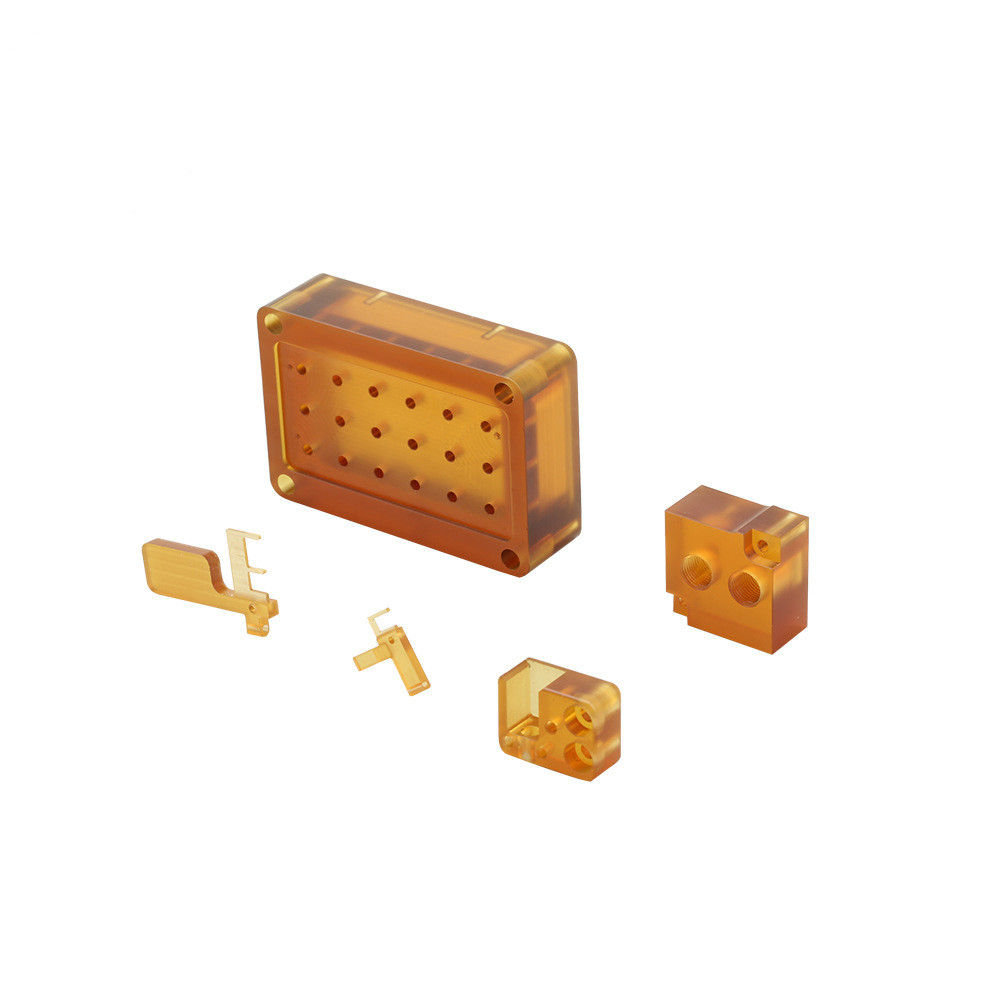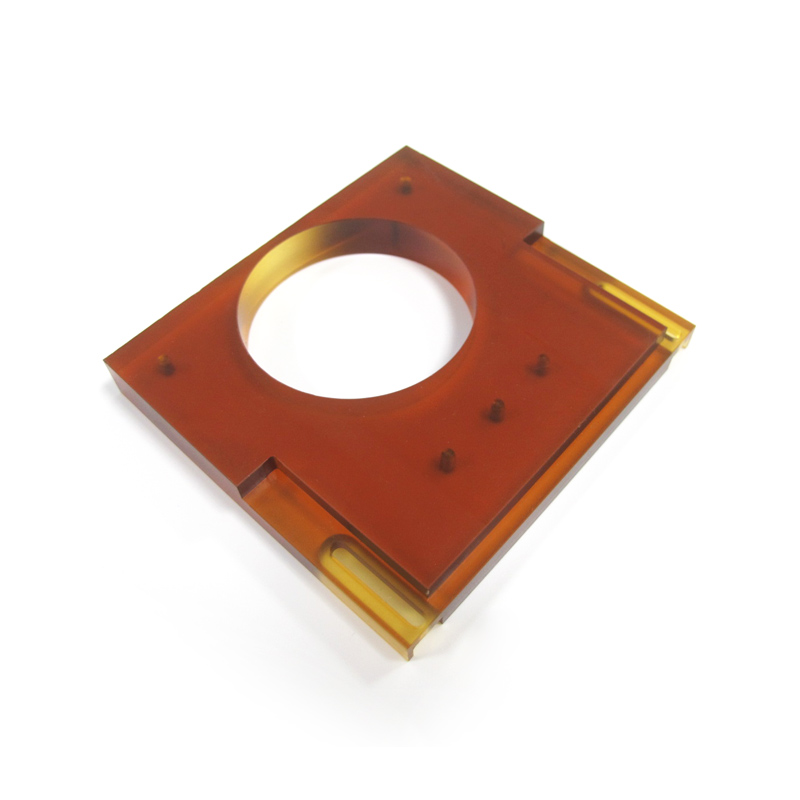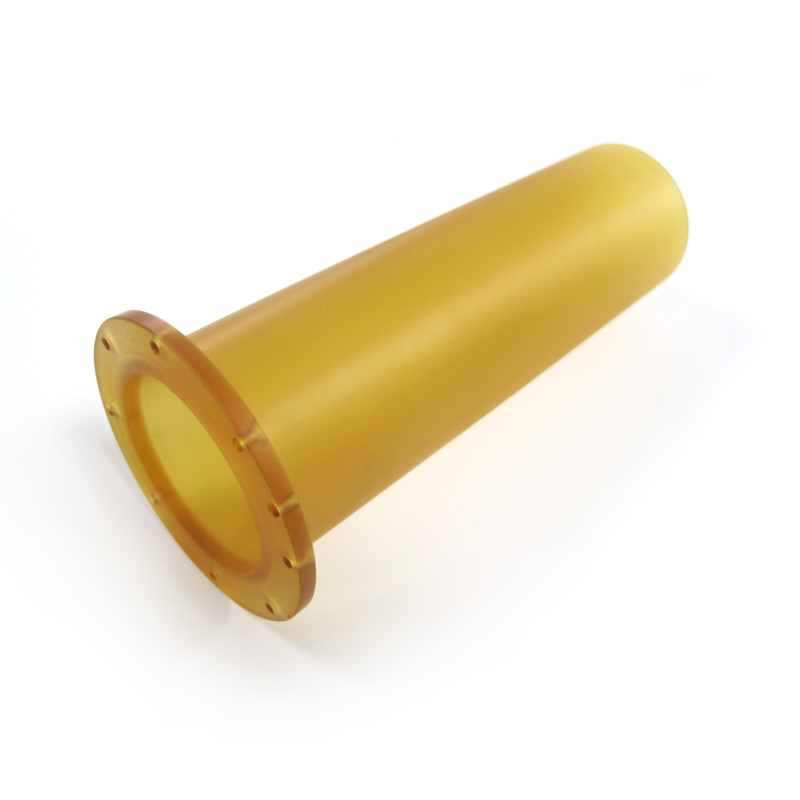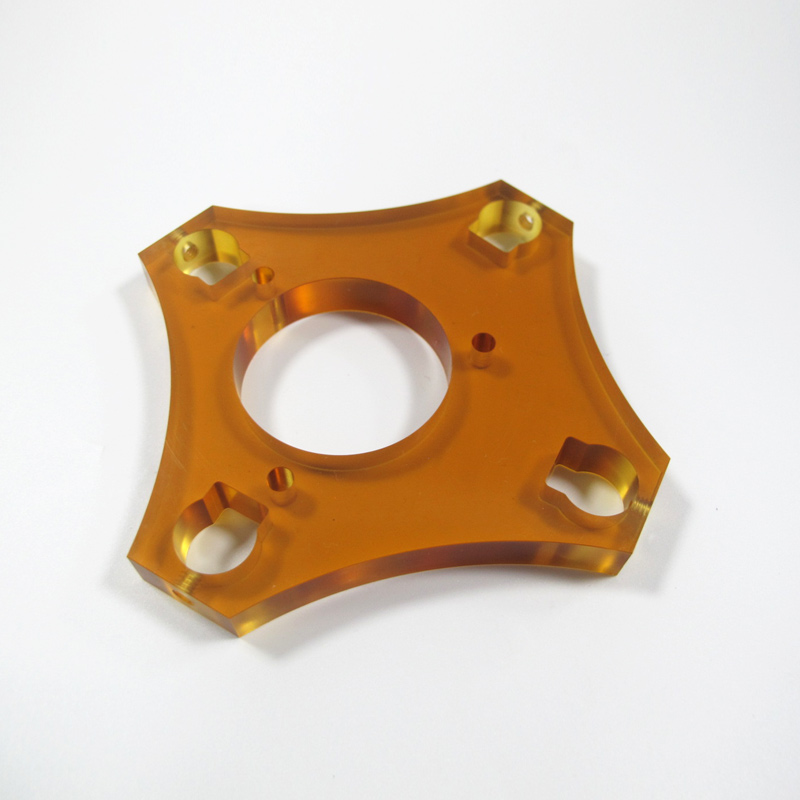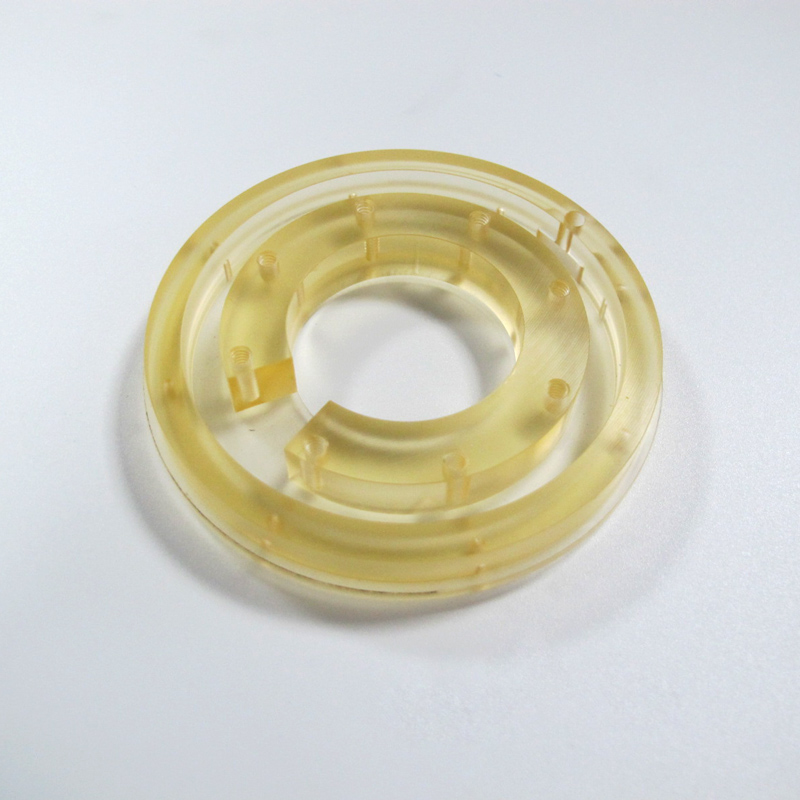PEI (Ultem) CNC Machining
PEI, also known as Ultem, is a high-performance plastic notable for its heat resistance, mechanical strength, and chemical resistance.
In CNC machining, Ultem is a versatile material that can be precisely shaped and formed to meet a wide range of specifications.
- Certified Materials
- Factory Price
- No Minimum Order
- Fast Turnaround
Save 30% cost on average!

Premium CNC Solutions for Your PEI Parts
Looking for a reliable PEI CNC machining partner?
Situated in China, AT-Machining is a leading PEI CNC machining service provider.
With a robust capacity of more than 50 cutting-edge CNC machines, we can handle 3-axis, 4-axis, and 5-axis milling and turning centers. This empowers us to produce superior CNC parts that perfectly align with your specific requirements, regardless of your sector.
Contact us today for a quote on the top-tier PEI CNC machining solutions in the market!
Get precise and versatile machining of PEI parts with our optimized 3, 4, and 5-axis CNC milling service.
Combine lathe and milling capabilities for efficient CNC turning with live tooling, ideal for machining PEI parts with cylindrical features.
Enhance the surface finish of CNC machined PEI parts through additional finishing techniques like polishing or sandblasting.
About PEI
PEI, which stands for Polyetherimide, is a high-performance thermoplastic. Often referred to by its brand name, Ultem, PEI is known for its impressive heat resistance, strong mechanical strength, and excellent chemical resistance. Its versatility and durability make it a popular choice in aerospace, medical, and automotive industries, especially for parts that need to withstand high temperatures and harsh environments.
Some of the key properties of PEI include:

- Heat Resistance
- Chemical Resistance
- Mechanical Strength
- Dimensional Stability
- Flame Resistance
- Electrical Properties
- Transparency
- Radiation Resistance
Most common grade of PEI
This standard, unfilled grade of PEI has excellent heat resistance, superior strength, and dimensional stability, making it a suitable choice for applications within the electrical and electronics industry. For example, Ultem 1000 can be used to manufacture electrical insulators that need to withstand high temperatures without losing their insulating properties. It’s also used in the automotive industry to create parts like manifold components, which need to resist the heat and chemical exposure found within an engine.
Ultem 1010 distinguishes itself from other Ultem grades by its superior thermal resistance and strength, making it well-suited for high-temperature applications. While all Ultem grades, including Ultem 1000 series, share a base of polyetherimide, offering excellent heat resistance, chemical resistance, and mechanical properties, Ultem 1010 is specifically engineered for applications requiring the highest performance in terms of heat resistance and mechanical strength.
These are glass-reinforced grades of Ultem with 10%, 20%, and 30% glass fiber content respectively. The glass fibers enhance their strength, stiffness, and dimensional stability, particularly at high temperatures. These are often used in the automotive industry. For instance, Ultem 2200 might be utilized in the production of ignition modules or throttle bodies, components that require heat resistance and dimensional stability. Additionally, Ultem 2300, with its higher glass fiber content, is used in the production of automotive reflectors due to its excellent heat resistance and dimensional stability.
These PEI grades are designed with the aviation industry in mind. They have improved flammability, smoke, and toxicity characteristics, making them a preferred choice for interior applications in aircraft. For example, Ultem 5000 could be used in the production of seating parts, and Ultem 5100 for cabin components. These components must meet rigorous safety standards for flammability, smoke, and toxicity, and these grades of Ultem are designed to meet these requirements.
These PEI grades are optimized for improved processability in injection molding applications. They’re often used in the medical field and pharmaceutical applications. For example, Ultem 4001 might be used in the production of surgical instruments due to its excellent heat resistance, chemical resistance, and biocompatibility. Ultem 4011, on the other hand, could be used to manufacture drug delivery devices for its resistance to various chemicals and biocompatibility.
Carbon fiber filled Ultem is a potent composite that blends the excellent mechanical, thermal, and chemical resistance of Ultem with the lightness and strength of carbon fibers. This material excels in dimensional stability, rigidity, and electrical conductivity, making it highly desirable for challenging applications in the aerospace, automotive, and electronics sectors.
PEI Mechanical Properties Chart
Common Polyetherimide (PEI) grades, often known as Ultem, are in a data table. Please note that these are typical values, which may vary slightly depending on the manufacturer and specific processing conditions. Always refer to the material manufacturer’s data sheets for accurate property information.
| Property | Ultem 1000 | Ultem 1010 | Ultem 2100 | Ultem 2200 | Ultem 2300 | Ultem 4001 | Ultem 5000 |
|---|---|---|---|---|---|---|---|
| Glass Fiber Content (%) | 0 | 0 | 10 | 20 | 30 | 0 | 0 |
| Tensile Strength (MPa) | 85-100 | 69-103 | 115-135 | 110-130 | 130-150 | 100-120 | 85-100 |
| Flexural Strength (MPa) | 110-140 | 103-138 | 140-170 | 135-165 | 160-190 | 115-135 | 75-95 |
| E-Modulus (GPa) | 3.3-3.7 | 2.9-3.3 | 4.2-4.6 | 3.8-4.2 | 4.5-5.1 | 3.5-4.0 | 2.7-3.1 |
| Notched Izod Impact Strength (J/m) | 170-180 | - | 190-200 | 180-190 | 190-200 | 175-185 | 160-170 |
| Continuous Use Temperature (°C) | 170 | 200 | 170-200 | 170-200 | 170-200 | 150-170 | 150 |
| Chemical Resistance | Good | Excellent | Excellent | Excellent | Excellent | Good | Good |
From this table, we can note that:
- Ultem 1010 excels in extreme heat resistance and mechanical robustness for demanding applications.
- Ultem 2100, 2200 and 2300 have higher tensile and flexural strengths than Ultem 1000, 4001, and 5000.
- Ultem 2100 has the highest E-modulus, while Ultem 5000 has the lowest.
- Ultem 2300 has the highest Notched Izod impact strength, while Ultem 4001 has the lowest.
- Ultem 2100, 2200, and 2300 have higher heat deflection temperatures than Ultem 1000, 4001, and 5000.
- Ultem 2100, 2200, and 2300 have higher continuous use temperatures than Ultem 4001 and 5000.
- Ultem 2100, 2200, 2300 have excellent chemical resistance, while Ultem 4001 and 5000 have good chemical resistance.
CNC machining, a subtractive manufacturing method, skillfully carves a chosen material to produce a design as dictated by a digital model. Ultem, a brand of the high-performance plastic Polyetherimide (PEI), is particularly well-suited to this process.
However, CNC machining PEI is not without challenges. PEI’s superior properties make it a more costly option compared to other plastics. Its high thermal resistance also necessitates specific machining techniques to circumvent potential overheating and deformation.
Keep in mind, the choice of manufacturing process and material should align with your application’s specific demands, such as the required material properties, part design, production quantity, and budget.

Benefit of PEI CNC machining
There are several benefits to CNC machining PEI
High Precision
CNC machining enables the fabrication of PEI parts with exceptional precision and accuracy, facilitating the creation of intricate designs and structures with stringent tolerances.
Consistency
CNC machinery facilitates the high-volume production of PEI parts, maintaining uniform quality and dimensional precision, thus guaranteeing each component aligns with the necessary specifications.
Faster Turnaround
CNC machining is capable of swiftly and proficiently fabricating parts, potentially reducing the duration and expenses linked to conventional manufacturing techniques.
Flexibility
CNC machinery is capable of fabricating PEI components in an extensive array of shapes and dimensions, thereby enabling the creation of bespoke parts that cater to specific design needs.
Material Properties
PEI's unique traits suit tough applications. CNC machining harnesses these for high-performance parts that meet specifications.
Cost-Effective
CNC is a cost-effective approach for small-scale production due to its minimal setup costs and automation potential, reducing the need for manual labor.

Optimize Design
Simplifying the design and reducing the complexity of the part can reduce machining time and waste material

Larger Batch Sizes
Ordering larger quantities of parts can often result in reduced cost per part due to economies of scale

Supplier Selection
Get PEI parts done cost-effectively with AT-Machining. Our experienced CNC machining team will guide you through material selection, part design, and machining optimization to minimize your costs and maximize quality.

Use Efficient Tool Paths
CNC machines can be programmed to use the most efficient tool paths to reduce machining time and tool wear
Gallery of CNC machined PEI parts
Our manufacturing capabilities serve diverse industries, including medical, aerospace, and marine robotics. We take on projects of any size and offer exceptional service to all customers
We are here to solve your problem and delivery your needs
CNC Machining PEI FAQs
PEI is considered a high-performance engineering plastic, and its machining cost is generally higher compared to common materials like ABS or nylon. However, the cost is justified by its exceptional properties and performance, especially in demanding applications.
Machining PEI typically requires sharp cutting tools with high rake angles to minimize heat generation. Tool coatings like diamond-like carbon (DLC) can also improve tool life and performance.
Lead times for CNC machining PEI parts can vary depending on the complexity of the parts, order quantity, and the machining shop’s capacity. It is advisable to consult with the machining shop to get an accurate estimate for the specific project.
CNC machined PEI parts may undergo quality control measures such as dimensional inspections, surface finish evaluations, and functional testing. It is essential to establish quality control requirements and ensure that the machining shop follows them.
When sourcing PEI for CNC machining, it is important to ensure the material is sourced from reputable suppliers who can provide consistent quality and certification documentation, such as compliance with industry standards and regulations.
- Aerospace: Seat components, structural brackets, instrument housings.
- Automotive: Connectors, electrical components, sensor housings.
- Electronics: Insulating components, connectors, switch housings.
- Medical Devices: Surgical instruments, device housings, implant components.
- Chemical Processing: Pump components, valves, gaskets.
- Food Processing: Conveyor components, slicing blades, equipment housings.
- Electrical Insulation: Bushings, connectors, terminal blocks.
- Analytical Instruments: Sample holders, instrument housings, detector components.
- Telecommunications: Antenna components, fiber optic connectors, device housings.
- Industrial Equipment: Gears, bearings, structural components.




